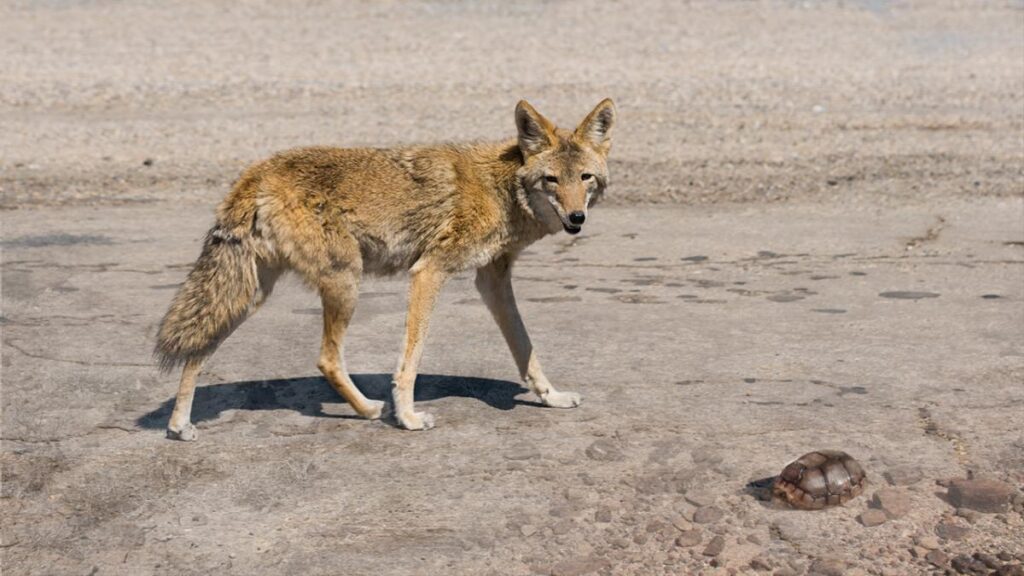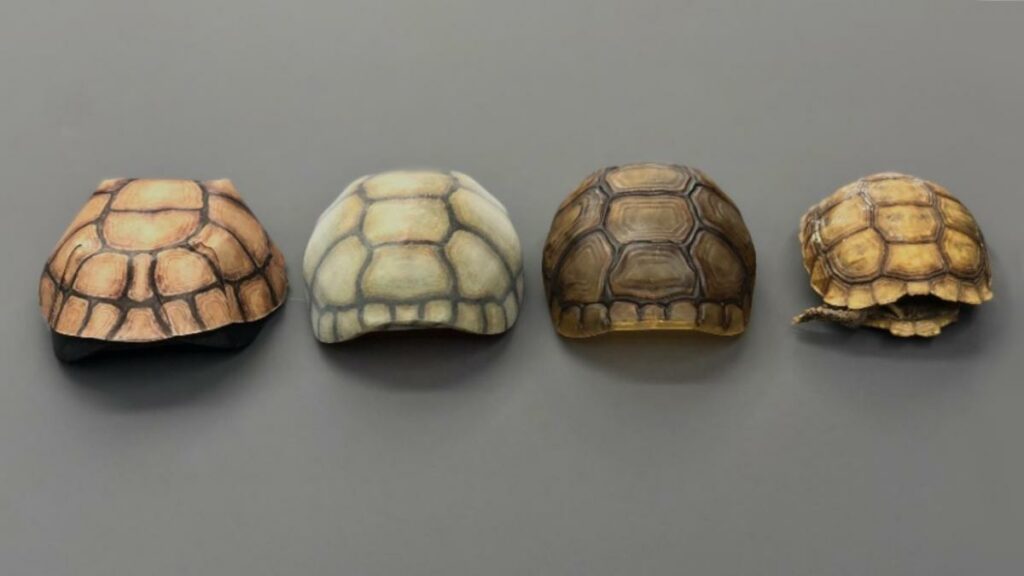BERNARD
A decoy to deter specific tortoise predator species
Biologically and Environmentally Robust Non-Lethal Aversion Robotic Device (BERNARD)
BERNARD is a sophisticated 3-D printed decoy that accurately mimics the appearance of a juvenile Mojave Desert tortoise, including a digital reproduction of the complex color pattern on the top of the shell. This non-lethal predator aversion device is an intelligent decoy that interacts with coyotes and other animals, discouraging them from pursuing the mimicked prey.

Caroline Kingsley,
Scientist at Charles River Analytics
Advanced modern technology approaches like Kingsley’s are needed to help make progress on long-established wildlife challenges. According to the World Wildlife Fund’s (WWF’s) Living Planet Report 2018, the size of global wildlife populations declined by an astonishing 60% in the last 40 years.
In response, the federal government has passed renowned legislation like the Endangered Species Protection Act. Of the many species covered by the act, desert tortoises have received the second most funding for conservation, but efforts to avert their predation have yielded few results.
The chief enemies to the tortoise in the Mojave Desert are not humans, but human-subsidized predators, particularly coyotes and ravens. These animal species—often overpopulated due to human influences like the production of edible trash—use visual and olfactory cues to locate and prey on tortoises. Culling the predator species is not a desirable option, for many reasons; for example, the common ravens (Corvus corax) that prey on tortoises are federally protected species themselves under the Migratory Bird Treaty Act.
The BERNARD prototype may look just like a tortoise; but it reacts like an intelligent, fearsome animal, delivering a barrage of light, sound, and non-lethal electric shock tuned to the predator attacking it. When a predator attacks a decoy, onboard motion sensors detect whether the decoy is lifted or flipped, indicating whether the predator is more likely to be a coyote or raven, which tend to lift versus flip tortoises, respectively. This discrimination allows the delivery of stimuli customized to deter a specific predator species. The decoys can be mass produced and spread throughout an environment like the Mojave Desert to affect an entire population of predators.


Other decoys have been developed, but they typically only possess a single type of aversion stimulus and lack the ability to deliver that stimuli with a sophisticated, intelligent response. Animal behavior research shows that the best way to alter coyote behavior is to use unpredictable multimodal stimuli—coyotes are smart enough to figure out just one response.
Laboratory demonstration of an early BERNARD prototype growling like a mountain lion when lifted and flashing when flipped—ravens hate green-colored light
Many other animal species—including livestock such as sheep and chickens—face unwanted predation from entirely different predators that are also protected, like mountain lions and bald eagles.
“You don’t want something that works just for desert tortoises; you have to be able to help other species,” Kingsley said. “If you can protect livestock and farm animals from predation, then you can actually improve the bottom line for farmers.”
Contact us to learn more about BERNARD and our other robotics and autonomy capabilities.
This material is based upon work supported by the United States Air Force under Contract No. FA9302-19-P-1008. Any opinions, findings and conclusions or recommendations expressed in this material are those of the authors and do not necessarily reflect the views of the United States Air Force. DISTRIBUTION STATEMENT A. Approved for public release; Distribution is unlimited 412TW-PA-20429.

